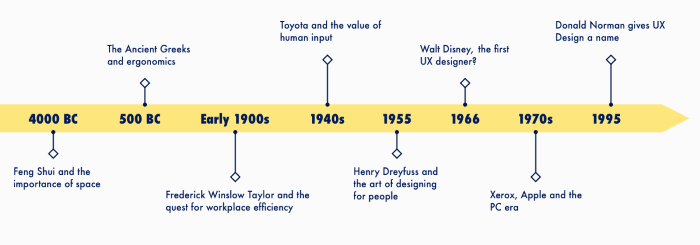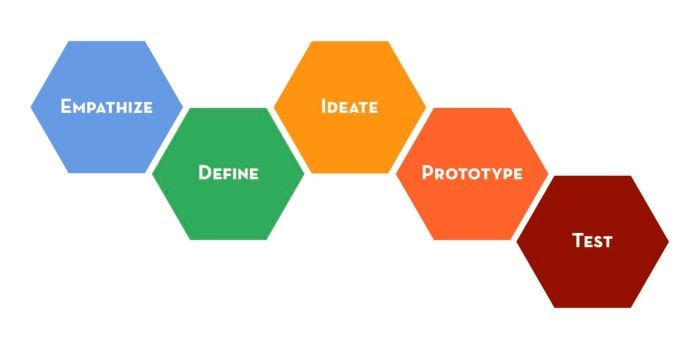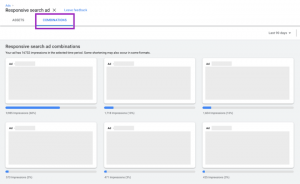A look at the processes, deliverables and benefits of user experience (UX) and conversion rate optimisation (CRO), and how these can work together to improve your website.
When discussing the overall performance of a digital product, there are two terminologies often mentioned in relation to improving performance – user experience and conversion rate optimisation. Although the two practices are related to one another, they’re not the same thing.
What is user experience (UX)?
User experience (UX) is the entire experience a user has with a digital or physical product. It is the process of making a product intuitive, easy and enjoyable to use so that a user can complete their desired goals. UX encompasses a user’s undivided attitude and emotions. It focuses on being empathetic with all the different types of users that interact with the product, over and above the business objectives. Users come first.
“People ignore design that ignores people.”
Frank Chimero
A brief history of UX
You might think UX is a modern practice that hasn’t been around for very long, but this isn’t the case. The term “user experience” was coined in the 1990s by American cognitive psychologist, Don Norman. But, UX predates its name by some time. According to The Next Web and other sources, UX origins can be traced as far back to Ancient Greece, with evidence to support that Greek civilization designed their tools and workplaces based on ergonomic principles.
In modern society, UX is evolving every day. It’s growing more and more popular amongst small, medium and large organisations, thanks to the value it has shown over the last two decades.

Image credit: www.thenextweb.com
UX deliverables
The work conducted by a UX Designer can come with many deliverables suited to many different environments. UX Design principles depend on the product, project, client, status, stakeholders and much more.
For example, UX may require a heavy portion of ethnographic research deliverables, usability testing deliverables, or quantitative analysis deliverables, among many others. Here are some generic UX deliverables you may find yourself regulating:
- User interviews
- Questionnaires
- Surveys
- Passive observations
- Contextual interviews
- Personas
- Customer journey mapping
- Empathy mapping
- User flow diagrams
- Competitor analysis report
- Wireframes
- Prototypes
- Sitemap and information architecture
- Pattern library
- Usability testing – moderated and unmoderated
UX processes
If you search the web for UX processes, you’ll find an abundance of different online sources with varying approaches and methods. This is because there are many different ways of solving a problem. Just like the saying, “there’s more than one way to skin a cat” – if the outcome achieves the goal (which is the user receiving a better overall experience) the method is valuable. Here are some popular methods:
- Empathise – Define – Ideate – Prototype – Test
- Empathise – Define – Ideate – Prototype – Test – Implement
- Understand – Define – Ideate – Design – Prototype – Test – Record
- Understand – Observe – POV – Ideate – Prototype – Test
- Discover – Define – Develop – Deliver
- Research – Ideate + Design – Prototype – Test + Iterate – Evaluate
- Listen – Analyse – Design – Test
Choosing the correct method for your project can be the tricky part. This comes down to the budget you have, the project size, the timeline you’re on, and the priorities of the task that need to be achieved for a successful outcome for the user.
 Image credit www.knowing.design.com
Image credit www.knowing.design.com
The benefits of UX
If your product or service is considerate of your users and their feelings, it’s more likely to be successful. By conducting research around your users, understanding them and how they interact with your product or service, you are better equipped to produce an efficient, effective and usable entity.
Not only will understanding your users enhance their experience, it will also make them more likely to return, increasing your retention rate and the opportunity for positive word of mouth around your brand and reputation. This can also positively impact your traffic numbers and attract more users to your product or service.
Looking beyond the top-level details of why investing in UX would be beneficial to your business, it also helps to validate concepts, increase engagement with your content, reduce assumptions and highlight the usefulness of your product’s features.
What is conversion rate optimisation (CRO)?
Conversion rate optimisation (CRO) is the process of encouraging a user to complete an action when they visit your website. CRO nurtures users into taking action, transitioning them from visitors to customers.
The importance of CRO is in its ability to get more value from your users. If done correctly, you can increase the revenue per visitor on your product.
On Neil Patel’s?site, there is a perfect example of how CRO can make a big impact on ROI. CRO enabled Walmart Canada to double sales for its mobile users and increase conversion rate by 20%.
Some popular CRO processes
The main goal of CRO is to create recommendations that enhance elements of your product and improve the conversion rate, which results in more value for your business. The recommendations will be based on quantitative and qualitative research data you’ve generated. These recommendations can then be A/B tested, split tested or assessed by other means. The important factor to account for in CRO is that the results are data-driven validation for the changes you have made, their impact on value to the business and any further recommendations you make.
There are many CRO methods that can be used to improve the conversion rate on all different types of products within multiple industries. Below are two processes commonly used within CRO:
Process one
- Examine
- What is the data telling you?
- Research
- What is happening and why?
- Take action
- How can you improve?
- Hypothesis
- Evaluation on evidence you can see
- Optimise
- Test and experiment
Process two
- Research
- Identifying the areas that need improving
- Hypothesis
- Produce a well-articulated hypothesis
- Prioritisation
- Structure the order for your recommendations
- Testing
- Select the relevant methods and the most effective
- Learning
- Review the test data and validate work
The benefits of CRO
At the end of the day, CRO makes your digital and marketing strategies more worthwhile. By analysing real data from various online tracking tools and customised built-in tools, you can take CRO actions based on real data insights rather than assumptions. All CRO work has meaning and information behind it, which also reduces risk, enhances the choices you make, and allows you to optimise and improve your product consistently.
Of all the benefits CRO will bring you, one of the top perks is the increase in users and generated revenue. Providing you steer clear of dark pattern methods, your users are more likely to continue to use your service. This will result in a higher retention rate, happy users and more bottom-line revenue for your business.
Other benefits include:
- More return of investment (ROI)
- Data-driven judgments
- Customer insights
- Improved SEO and rankings
- Lower customer acquisition costs
How can UX and CRO work together?
As we have seen through this blog post, there are many interchangeable areas between UX and CRO. Although they’re not the same, both have similar traits and end goals. Both practices are based on real data and information about the user and the product. Neither makes assumptions.

Image credit: gobysavvy.com
UX methods and results are often valuable for your CRO team too. For example, your UX team could conduct an eye-tracking study to find out where users look on a specific page and how they digest the content before moving on, which could reveal that users often read your content in the F-Shaped pattern.
Using this information, your CRO team can build their hypothesis on where to place the call-to-action (CTA) for increased engagement. If the data shows users following the F-Shaped pattern, positioning the CTA on the left side should enhance user interactions and ultimately improve conversions on that specific page.
Ultimately, UX and CRO complement each other to make users happy, and if users are happy they’re more likely to convert.
Digital & Social Articles on Business 2 Community
(87)









